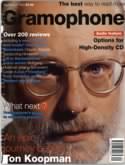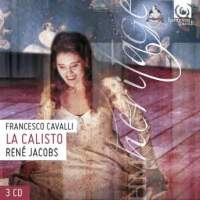Texte paru dans: / Appeared in: |
|
|
Outil de traduction (Très approximatif) |
|
|
Reviewer: Ian Fenlon
... Rene Jacobs' ... version of Calisto is clearly the product of much careful and informed thought, even if the results also sometimes fly in the face of what is known about performance conditions in at least some seventeenth-century Venetian houses. The real difficulty here is the paucity of information. From two sets of damp-stained accounts dating from around 1660 we learn that the standard opera orchestra in the city consisted of single strings together with a continuo group comprising harpsichord and theorbo. In other words, the whole weight of the audience's experience was, and should be in any re-construction, upon the voice, which was supported by a skeletal underpinning. Exceptions there may have been, but this was clearly the norm. And as far as the voices are concerned, there is much to enjoy in this recording.
Maria Bayo, an artist who has
recorded both older and contemporary works, has a good sense of Cavalli's vocal
manner, which for much of the time ranges from the declamatory to the arioso,
with occasional flowerings into those short arias that are the forbears of later
, more structured operas. This mellifluous language she handles with real
understanding, accommodating each textual nuance, each shift of emotional
condition with ease and conviction . Among the other major roles Marcello Lippi
sings with an attractively rich and tightly focused tone, while Alessandra
Mantovani has a light , clear but firm voice. As for the rest of this largish
cast (another highly characteristic feature of early Venetian opera), there is a
very high level of achievement. So far so good if not excellent. More
controversial is Jacobs's approach to the instrumental aspects of the score;
against the historical evidence, the orchestra has been expanded to include
cornetts, recorders and violas while the continuo group also contains an organ,
a Iirone and a harp. Some of these instruments have been encouraged to improvise
at various points, and in general there is a great deal by way of added
counter-melodies and other intrusions much in the manner of Harnoncourt 's
Monteverdi recordings. The result will not be liked by everyone, for all that
the musicianship on display is of a high order. Certainly there is room for a
leaner approach that more accurately reflects what is known about performance
conditions and conventions in the Venetian houses in which Cavalli worked, and
for which Calisto was written . |
|
|
|
|
|
Cliquez l'un ou l'autre
bouton pour découvrir bien d'autres critiques de CD |
|




